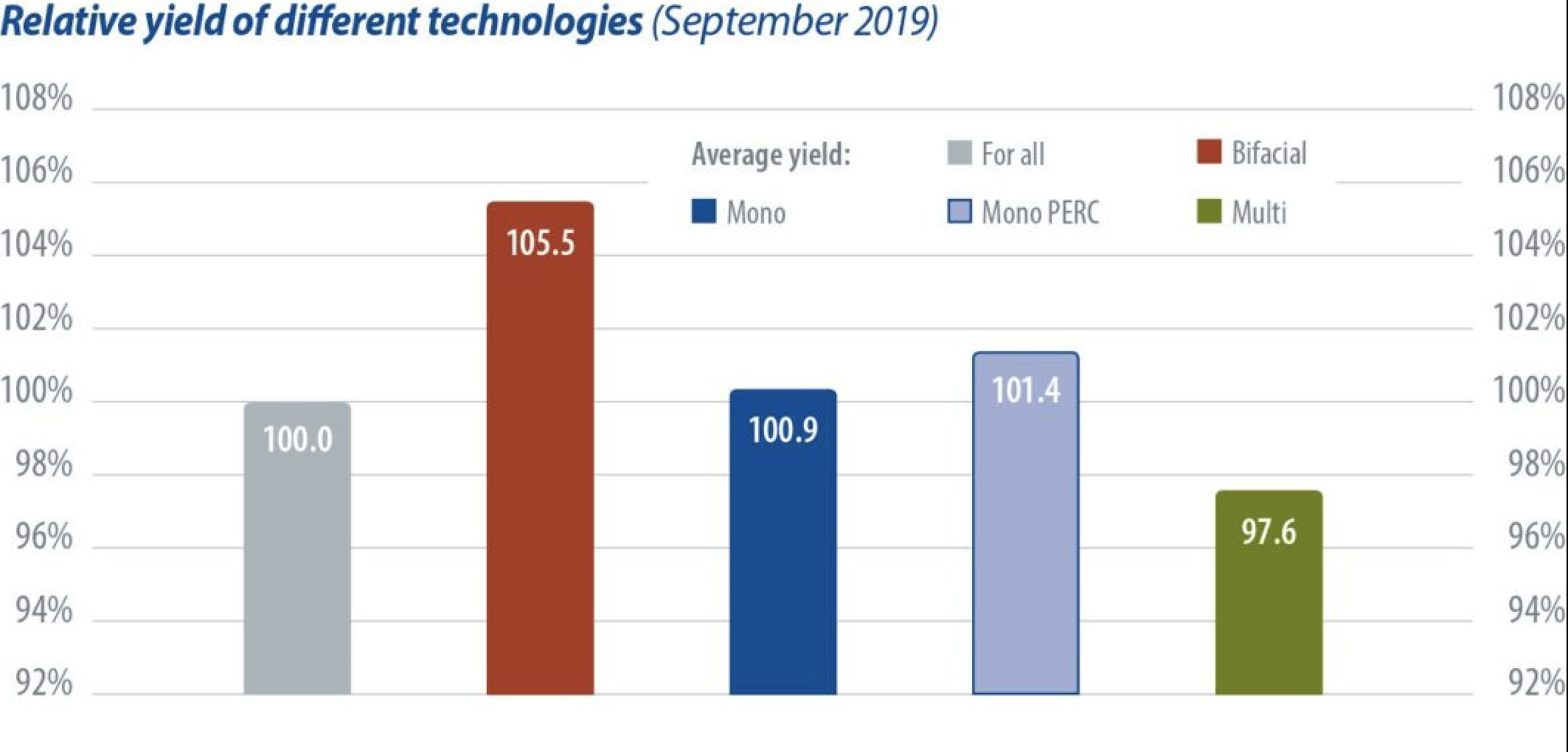From pv magazine, November edition
The first chart, below, shows irradiance and ambient temperature data for September 2019. The inverter system was offline for maintenance from Sept. 1 to Sept. 12. As a result, the analysis is based on data collected from Sept. 13 to Sept. 30.
 Jinko Solar’s mono PERC, half-cut module (JKM400M-72H) was installed on Aug. 12, and Longi’s bifacial module (LR6-72HBD375) on Aug. 28.
Jinko Solar’s mono PERC, half-cut module (JKM400M-72H) was installed on Aug. 12, and Longi’s bifacial module (LR6-72HBD375) on Aug. 28.
Monthly yield figures from April to September 2019 are provided in the table below. The second chart to the right shows the total energy yield of all products for the month of September.
Control test
A test was set up between three Znshine modules in August. Of two graphene-coated modules (ZXP6-60-275/P), one is cleaned weekly while the other is not cleaned at all. An uncoated module (ZXP6-60-265/P), which is not cleaned, was installed as a reference.
The average energy yield of the three is shown in the third chart. We observed a 1.1% energy yield boost from the coated module. As the dust continues to accumulate over time, it is expected that the energy yield boost will grow.
The overall bifacial boost for September 2019 averages 6.9%. Bifacial boost is defined as the extra energy yield of the bifacial products, compared to the average energy yield of all mono-facial products.
The chart below shows the comparison between module technologies for September 2019. Bifacial modules are steadily performing above the average energy yield level, with multicrystalline silicon PV performing below the average energy yield level.
Test cooperation
pv magazine test is a cooperative effort involving pv magazine, CEA and Gsolar. All testing procedures are carried out at Gsolar’s test laboratory in Xi’an, China. CEA supervises these tests and designed both the indoor and outdoor testing procedures.
Notes on the energy yield data:
- The energy yield is given in Wh/Wp and calculated by dividing the energy produced by the module by the Pmax at STC of the module. This Pmax is the maximum STC power after a process of stabilization.
- The results are grouped in categories, per module type.
- The bifacial boost depends on many parameters, including the bifaciality factor, the installation geometry, the albedo of the ground, and also the sun angle and diffuse irradiance
- The ground in this case is a plastic cover simulating green grass.
This content is protected by copyright and may not be reused. If you want to cooperate with us and would like to reuse some of our content, please contact: editors@pv-magazine.com.











1 comment
By submitting this form you agree to pv magazine using your data for the purposes of publishing your comment.
Your personal data will only be disclosed or otherwise transmitted to third parties for the purposes of spam filtering or if this is necessary for technical maintenance of the website. Any other transfer to third parties will not take place unless this is justified on the basis of applicable data protection regulations or if pv magazine is legally obliged to do so.
You may revoke this consent at any time with effect for the future, in which case your personal data will be deleted immediately. Otherwise, your data will be deleted if pv magazine has processed your request or the purpose of data storage is fulfilled.
Further information on data privacy can be found in our Data Protection Policy.